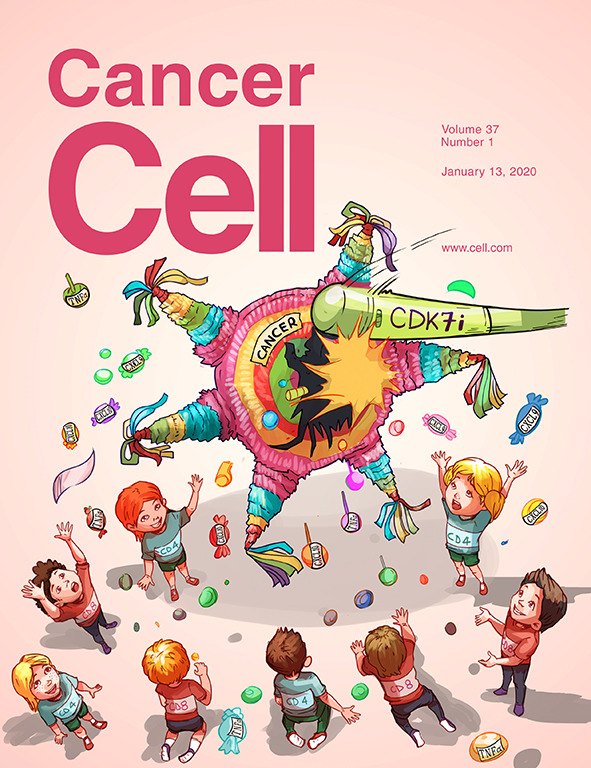Large B cell lymphoma microenvironment archetype profiles
IF 44.5
1区 医学
Q1 CELL BIOLOGY
引用次数: 0
Abstract
Large B cell lymphomas (LBCL) are clinically and biologically heterogeneous lymphoid malignancies with complex microenvironments that are central to disease etiology. Here, we have employed single-nucleus multiome profiling of 232 tumor and control biopsies to characterize diverse cell types and subsets that are present in LBCL tumors, effectively capturing the lymphoid, myeloid, and non-hematopoietic cell compartments. Cell subsets co-occurred in stereotypical lymphoma microenvironment archetype profiles (LymphoMAPs) defined by; (1) a sparsity of T cells and high frequencies of cancer-associated fibroblasts and tumor-associated macrophages (FMAC); (2) lymph node architectural cell types with naive and memory T cells (LN); or (3) activated macrophages and exhausted CD8+ T cells (TEX). Divergent patterns of cell-cell communication underpinned the transcriptional phenotypes of archetype-defining cell subsets resulting in exclusion, support, or suppression of T cells, respectively. Consistent with this, LymphoMAPs were associated with significantly different clinical outcomes following CD19 chimeric antigen receptor (CAR) T cell therapy.

大B细胞淋巴瘤微环境原型图
大B细胞淋巴瘤(LBCL)是临床上和生物学上异质性的淋巴样恶性肿瘤,具有复杂的微环境,是疾病病因学的核心。在这里,我们对232例肿瘤和对照活组织检查采用单核多组分析来表征LBCL肿瘤中存在的不同细胞类型和亚群,有效地捕获淋巴细胞、髓细胞和非造血细胞区室。细胞亚群共同发生在典型淋巴瘤微环境原型谱(淋巴瘤ap)中,定义如下;(1) T细胞的稀疏性和癌症相关成纤维细胞和肿瘤相关巨噬细胞(FMAC)的高频率;(2)淋巴结结构细胞类型为幼稚T细胞和记忆T细胞(LN);(3)激活巨噬细胞和耗尽CD8+ T细胞(TEX)。不同的细胞-细胞通讯模式支撑了原型定义细胞亚群的转录表型,分别导致T细胞的排斥、支持或抑制。与此一致的是,在CD19嵌合抗原受体(CAR) T细胞治疗后,淋巴瘤ap与显著不同的临床结果相关。
本文章由计算机程序翻译,如有差异,请以英文原文为准。
求助全文
约1分钟内获得全文
求助全文
来源期刊

Cancer Cell
医学-肿瘤学
CiteScore
55.20
自引率
1.20%
发文量
179
审稿时长
4-8 weeks
期刊介绍:
Cancer Cell is a journal that focuses on promoting major advances in cancer research and oncology. The primary criteria for considering manuscripts are as follows:
Major advances: Manuscripts should provide significant advancements in answering important questions related to naturally occurring cancers.
Translational research: The journal welcomes translational research, which involves the application of basic scientific findings to human health and clinical practice.
Clinical investigations: Cancer Cell is interested in publishing clinical investigations that contribute to establishing new paradigms in the treatment, diagnosis, or prevention of cancers.
Insights into cancer biology: The journal values clinical investigations that provide important insights into cancer biology beyond what has been revealed by preclinical studies.
Mechanism-based proof-of-principle studies: Cancer Cell encourages the publication of mechanism-based proof-of-principle clinical studies, which demonstrate the feasibility of a specific therapeutic approach or diagnostic test.
 求助内容:
求助内容: 应助结果提醒方式:
应助结果提醒方式:


